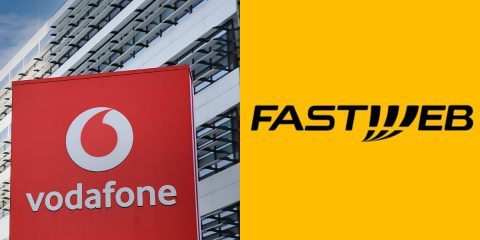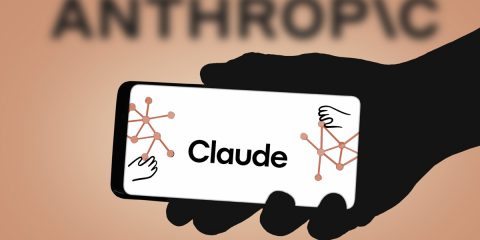Italia

Pubblichiamo di seguito l’intervento del Ceo di Italtel, Stefano Pileri, all’evento ‘Beyond Dubai: A New Global Agenda for the Internet’, organizzato da alleanza per internet e tenutosi a Roma nella Sala delle Conferenze internazionali del Ministero degli Affari Esteri.
Telecommunication market trends
The telecom market has become much more competitive and complex even due to the struggle between CSPs and OTTs. Current CSPs’ revenue derived from network connectivity and access is under tremendous pressure.
In developed markets, a weakness in traditional telecom revenue growth at a CAGR of about 1% (2011-2016) is a major driver for service portfolio diversification.
Mobile services is the only segment that is still exhibiting significant growth of 2.6% (2011-2016).
One of the important factors is the comparison of the main financial results between CSPs and OTTs:
- Revenueà OTTs 10fold smaller but 30fold more dynamic than Telco Operators. Revenue of the first 5 Telco Operators (AT&T, Verizon, Telefonica, Deutsche Telekom, Vodafone) is 346B while the revenue of the first 5 OTT (Google, Yahoo, Facebook, Youtube and Skype) is 36B (10fold less compared to CSP). Revenue growth 2011/2010 of the first 5 OTTs is on average 24,4%, while that one of Telco Operators is 0,8% .
The Market Cap is another important index to understand the supremacy of OTTs vs CSPs:
- The first OTT is Apple with a Market cap of 627 B$ compared with the first CSP that is China Mobile with 177 B$ (time frame respectively 1/10/2012 and 31/11/2012) .
The telecommunications market and the telecoms industry as a whole are undergoing a disruptive trend that covers services, networks and devices.
As regards network developments, LTE appears as the fastest developing mobile system technology ever and a significant part of the CAPEX of CSPs is focused on these investments.
In addition to this, the investments on networks have the target to raise ARPU. In particular mobile ARPU has fallen by 20% over the last three years, dropping from 25 in 2007 to 20 in 2010 on average.
To summarize:
× ARPU and profitability are in crisis
× Investments have to increase
Economics behind fixed and mobile Next Generation Networks
Huge investments are needed to follow customer demand for more capacity and speed. NG Fixed and Mobile Networks require a development of fiber based access and 4G advanced LTE architecture.
On the other hand, profitability of traditional telecommunication networks is declining because of the fierce competition that is pushing the very dangerous concept of flat rate prices and “all you can eat” approach and because of the continuous substitution of minute of traditional voice and SMS with OTT services based on Apps and Social Networks.
ARPU will not sustain the described investment needs and Telecommunication Industry, at least in Europe, will not be in the condition to cope with the recommendations of UE commission for a Digital Agenda for Europe.
Focus on LTE frequencies in Italy
The LTE auction began August 30, 2011 with the opening and reading of economic tenders of the 4 mobile operators permitted to tender (H3G, Telecom Italy, Vodafone, Wind). All four operators had submitted a economic bid activity on the 800 MHz band. The auction on 800 MHz ended on September, 22 2011 reached 2.962 M (Wind, Telecom and Vodafone).
From the point of view of the international benchmarking price/MHz/resident, the Italian auction was the most expensive among those carried out on Digital Dividend frequencies with a value of 0.809/MHz/resident.
Focus on NGAN and LTE investments
NGAN investments are billionaire. In Italy, they forecast 19,7 B to reach 100% of population coverage.
FTTC deployments cost four times less than FTTH ones. The cost per house is about 200 (FTTC) instead of ≈ 800 FTTH.
As regards LTE deployments, after LTE auction, it is necessary to add a total cost of about 1 B for each operator (deployments of new sites, Up-grading of the current network and backhauling).
If we calculate the investment/user value, we reach about 75/user (the value includes the cost for LTE frequencies) that is lower than the NGAN investment (≈300/user in case of FTTH).
To summarize:
CSPs have to spend about 75/subscriber to develop a LTE network and about 300/subscriber to realize a NGAN network (FTTH), but the ∆ARPU between ADSL and FTTH ARPU is null at the beginning (the current FTTx offers are at the same price level of ADSL offers ≈35/month) and it will be different only after 6/12 months (≈50/month).
Possible scenarios to improve NGN sustainability
Three different directions can be followed in order to sustain NGN network development:
- Consolidation of Telecommunication Sector (mainly in Europe)
- Public initiative to reduce pressure and risk of NGN investment, especially in the infrastructure (They foresee 3 different models to implement “Progetto Strategico Banda Ultralarga”: a) Direct Model – Public Design, build and operate; b) Private Public Partnership; c) Incentive Model – Private Design, build and operate)
- New model that can monetize QoS based traffic and change the IP interconnection model over the Internet.
Adding Quality of Service in a Best Effort Internet model
Today digital services (video, music, pictures) and applications are generating increasing demand for QoS delivery (minimum bit rate, latency, jitter and packet loss). QoS mechanisms allow players to differentiate their offering and to enable Digital society (e-health, e-education, smart grids, security and more).
For example, in digital society much depends on networks and information systems. Enhanced security is therefore a key element for the success of broadband. New wireless applications will enable people to access the Internet from anywhere. The tendency to connect to the Internet everything – from printers to central heating systems – will continue. The more people expand the ways they use the Internet, the more the potential security risks multiply. Security and quality of service (QoS) are two critical network services in today’s inter-networked world. Security mechanisms are used to provide proof of identity, preserve protected information, and ensure that information received has not been tampered with. Quality of service enables multimedia and other real-time services to use public data networks instead of more expensive dedicated networks.
However, Internet by itself cannot guarantee QoS requirements. For example, the basic service principle of the smart grid is based on best-effort service. Therefore, some QoS capabilities should be added to ensure the prioritization of mission critical or delay sensitive traffic.
A new IP interconnection model
In order to generate value out of their specific assets, telecom operators should offer OTT/Content Providers (CP)/CDN Providers connectivity services that guarantee e2e QoS, from the interconnection point to the end user. By endorsing the concept of “quality based delivery”, new IP interconnection models can be defined to overcome the limitations related to traditional models that:
- do not allow traffic management according to its characteristics (i.e. source/destination, delivery requirements, optimization of IP network efficiency and cost reduction);
- do not allow for the exploitation of telecoms operators’ distinctive value‐add items (end‐users, access networks, domestic and international backbones);
- do not allow telecoms operators to make a value proposition to OTTs looking for a better user experience and a better reach of their services.
Moreover, the contribution states that in order to ensure an adequate return on investment in high bandwidth infrastructures, operators shall negotiate commercial agreements to achieve a sustainable compensation for telecommunications services.
An example of the value of QoS delivery is VoIP. Many National Authorities are deciding the termination price of a VoIP call between different IP networks. In the medium term, in Italy, the price will be 0,05 cent/min (1 min of VoIP call at 64 Kbit/s) that means 1 /GB.
If we compare such value with an average bundle in the mobile market we found that up to 10%-20% of the Telecommunication future revenues could be based on QoS delivery to the customer base and paid by the subjects who ask for the delivery (20% of 4 is ≈1/GB).
#beyondWCIT: lo Speciale di Key4biz













